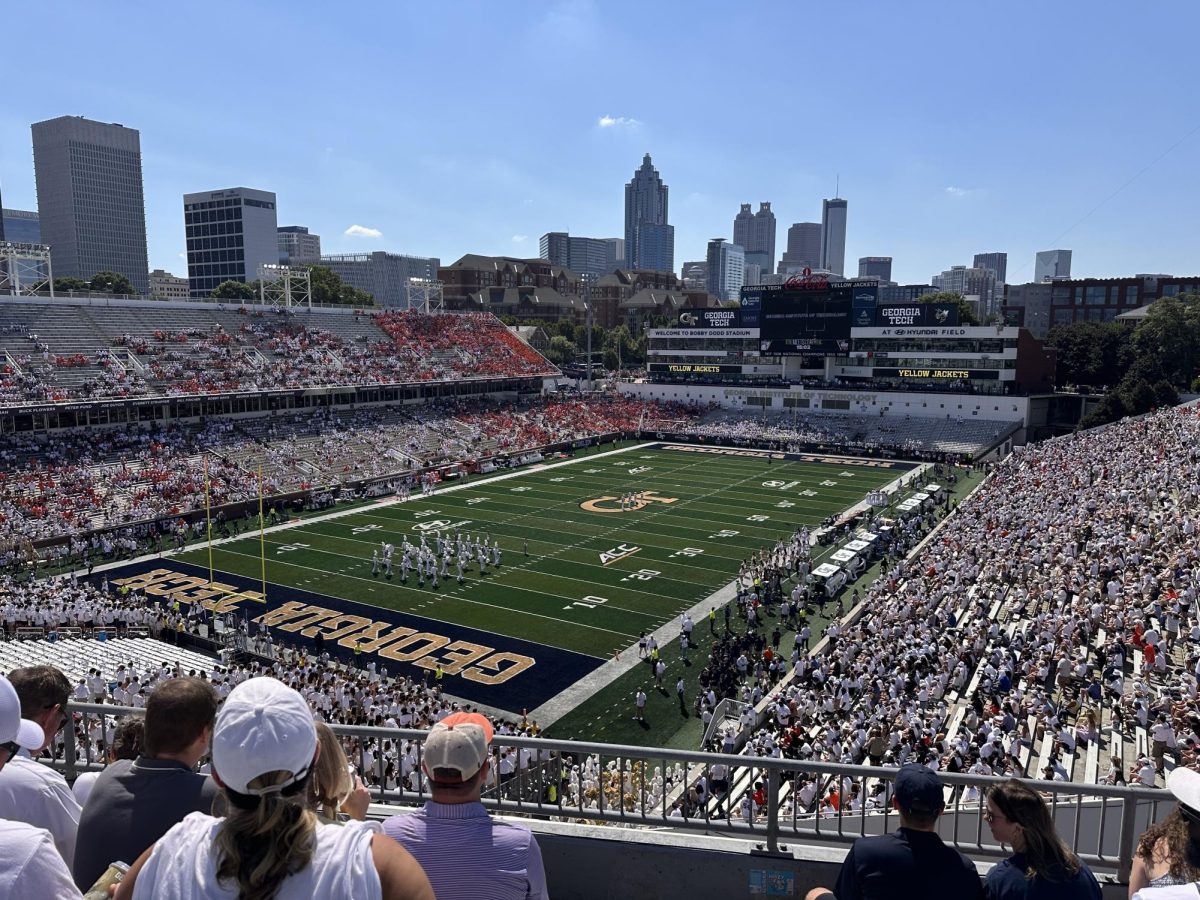Waking a Giant: How San Francisco Beat the Odds
October 4, 2021
“Best case: The Giants continue to engage in a bold rebuilding effort without bottoming out. That leaves their upside as mediocre, and in a league where mediocre likely leaves you out of wild-card contention, the short-term outlook is blah.”
That quote is pulled directly from ESPN’s official preseason power rankings, in which the respected sports publication’s team of baseball experts predicted the San Francisco Giants to end the season with a bleak 70-92 record.
Now, five months and 162 games later, the Giants have defied all odds, finishing the season with an unprecedented 107 wins, the best in baseball.
And yet, I don’t think any less of ESPN’s analysts after looking back at their article from late March. The narrative for the season had already been set. Last year’s World Series winning Los Angeles Dodgers were supposed to repeat as the best team in baseball, as their NL West division rival San Diego Padres nipped at their heels for the division title with a host of new acquisitions.
It wasn’t just ESPN — MLB.com, Sports Illustrated, and my Uncle Rick all agreed: the Dodgers and Padres would finish one and two. The Giants weren’t even in the conversation. So where are the Dodgers and Padres now?
To be perfectly honest, the Dodgers are exactly where everyone thought they would be. Over the offseason, the west coast juggernaut went from being the heavy favorite to the even heavier favorite as they added NL Cy Young winner Trevor Bauer to their roster. Unlike the Giants, their 106 wins are absolutely precedented.
The same cannot be said for the Padres, however. They spent their offseason bolstering their pitching rotation with former Rays ace Blake Snell and 2020 Cy Young runner-up Yu Darvish, among others. Combined with their already strong positional core, led by superstar shortstop Fernando Tatis Jr., the team was poised to make a serious run for the division title. And for the first months of the season, it looked like they might do just that. But 162 is a really big number. As the season wore on, injuries plagued the San Diego ball club. Of their seven pitchers projected to accrue at least one WAR (Wins Above Replacement), only one met his expected innings total. Their pitching staff’s impressive 2.69 ERA (Earned Run Average) by the end of May rose to 4.75 by the end of July, and continued to worsen, the team’s problems coalescing into a dreadful late-season collapse. After August 10, the San Diego Padres only won 13 of 47 games, finishing with a disappointing 79-83 record, a full 28 games back from the first place Giants.
But yet again, I don’t think any less of the analysts who published their takes about how San Diego would make a run deep into the postseason. Baseball is really hard to predict — there are simply so many factors to consider, spread out over a long season. The margin for error is astronomical when compared with sports like football, whose season is only 16 games*, or basketball, in which a single star player can carry a team. (Seriously, the NBA Finals for the last decade have basically been “the best team in the west vs. whatever team Lebron is on.”)
This margin for error is what allows for collapses like the Padres’ to happen. It’s also what allows for far-fetched occurrences like the Giants’ incredible season to come to fruition. But why was the Giants’ resurgence so improbable?
To explain this, we first need context. The Giants began the 2010s by building a baseball powerhouse. As San Francisco exited the Bonds era in the latter half of the 2000s, they searched for a new identity. And they found one, with young, dynamic stars like pitcher Tim Lincecum and catcher Buster Posey emerging to take up the mantle of the Giants’ greats before them. The result was something that hadn’t been done by a team not called the New York Yankees since the 70s: the San Francisco Giants won three World Series in five years, from 2010 to 2014.
Then, as time tends to do, the Giants’ young stars became not-so-young. The franchise’s core — players like Posey, shortstop Brandon Crawford, and first baseman Brandon Belt — who had been so instrumental in San Francisco’s championships, began to show steady decline. It became clear that the role of these players had shifted from winning championships to mentoring the Giants’ potential championship teams of the future, as they began their rebuilding effort a few years ago, just in time for the Dodgers to step up and take control of the National League West. As Sports Illustrated eloquently put it in their own preseason projections, “The sun is setting on the championship tenure of Brandon Belt, Brandon Crawford and Buster Posey.”
That’s where the Giants were, going into this season. But then, they started playing.
The Giant’s began their season by going 16-10 in April. And as most, including myself, dismissed it as a fluke, they answered back by going 18-10 in May. Then 16-9 in June, and 15-10 in July. When people finally began to take them seriously, they leaned even harder on the accelerator, with an incredible 19-7 August, while the preseason hopeful Padres were left in the dust. And now, having ended the season by casually winning twenty-three games in September and early October to finish with a 107-55 record, the Giants have proven, beyond a doubt, their ability to beat the odds. But it’s the way they did it that is most shocking to me.
Most often, when a team outperforms their expectations, it’s thanks to the unproven players, those who haven’t necessarily shown their worth at the big league level yet, but are able to take the step up and be a major role player. Teams like the 2019 White Sox come to mind. The young trio of Yoan Moncada, Tim Anderson, and Eloy Jiminez broke out that year, elevating their team to the next level.
What the Giants did was different. It wasn’t the Giants’ prized catching prospect Joey Bart who burst onto the scene with an .889 OPS (On-base Plus Slugging) — it was Posey, the 34 year old catcher, who reinvigorated his career after putting up a meager .688 OPS in 2019, the last time he played. It wasn’t the Giant’s shortstop of the future, top 10 prospect Marco Luciano, who received the call up to the Majors and put the team on his back — it was Brandon Crawford, the 10-year veteran shortstop, who had never before even reached an .800 season OPS, but came close to .900 as he terrorized pitchers all season long.
Based on ZiPS projections, the top ten overperformers of the entire 2021 MLB season include five San Francisco Giants, four of whom are at least 34 years old. Those four players outperformed their expected OPS by more than .235 points. That isn’t supposed to happen. Older players who have shown steady decline aren’t supposed to simply “be good again.” And yet, here we are.
Will the Giants continue the trend deep into October and dominate the postseason? Sure, maybe, they might. That’s not really for me to say. Baseball is unpredictable. They could just as easily flame out in four games.
But regardless of what happens over the next month, I think it’s important that we remember the last five, and how the San Francisco Giants beat the odds.
*The NFL season was expanded to include one more game this year, but a full 17-game-season has not yet been completed.
Huge thanks to Shawn Coleman (@StatsSAC on Twitter) for helping me research year-to-year statistics.











Jerry Hajdusiewicz • Oct 5, 2021 at 8:03 pm
Outstanding and not a word wasted!
I absolutely “ knew “ the Giants were never even going to be in the conversation re MLB playoffs , shows you it ain’t over till it’s over ❤️⚾️
Congrats